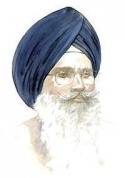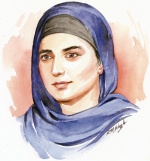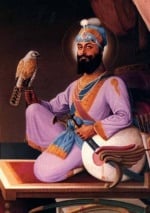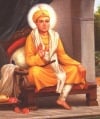Main Page
It's not about history or even her-story; it's our story, and we are writing it now. Come help us create our future at Sikhi Wiki. Sikhi Wiki is a grand pursuit that we ask you to join us in! Read more about SikhiWiki and its purpose
Arts and Heritage | Biographical | Sikhs Worldwide | Gurdwaras | Historical Events | Philosophy, Spirituality and Ethics | Places | Scriptures and Literature | Social Institutions and Movements | Lifestyle and Technology | Sikhi Terms | Sakhis | Websites | News
|
Featured articles
The turban is closely associated with Sikhism. Sikhism or Sikhi is the only religion in the world in which the wearing of a turban is mandatory for all adult males. Vast majority of people who wear turbans in Western countries are Sikhs. The Sikh turban is also called the pagdi or dastaar, which is a more respectful word in Punjabi for the turban. All these words refer to the garment worn by both men and to a lesser extent by women to cover their heads. Some women prefer to wear a chunni instead of a turban. The dastaar is a headdress consisting of a long scarf-like single piece of fine cloth wound round the head or sometimes over an inner "hat" or patka. Traditionally in India, the turban was only worn by men of high status in society; men of low status or of lower castes were not allowed or could not afford to wear a turban. Sikh's are famous for their distinctive turbans. The turban represents respectability, and is a sign of nobility. .....More Recent Articles
Below are listed some of the most recent articles added to SikhiWiki. Click on the title of the article to read the full text. Women in Sikhism In Sikhism, the Sikh women are regarded as equal with men and have all the rights and privileges enjoyed by men. The woman is considered to have the same soul as man and has equal right to grow spiritually. The Sikh woman is allowed to lead religious congregations, to take part in Akhand Path (the continuous recitation of the Holy Scriptures), to perform Kirtan, to work as Granthi (priest) or a preacher and to participate freely in all religious, cultural, social, political and secular activities...... Guru Har Gobind On 5 July 2006, the Sikhs celebrated the birthday of their sixth Guru, Guru Har Gobind (1595-1644). Guru Ji was born at village Guru Ki Wadali in district Amritsar on 19 June 1595 and was the only son of Mata Ganga and Guru Arjan, whom he succeeded on 11 June 1606 at the age of only 11 years old. The young Hargobind received his early education and training from the revered Sikhs leaders of the time Baba Buddha and Bhai Gurdas. Guru Hargobind was married in about 1610 to Mata Nanaki also known as Mata Marwahi or Mata Mahadevi. They were endowed by a large family of one daughter Bibi Viro and five sons: Baba Gurditta, Suraj Mal ji, Ani Rai ji, Atal Rai ji and Tegh Bahadar ji. Guru Hargobind was responsible for wearing two kirpans - one for Miri and one for Piri and began the rapid and irreversible militarization of the Sikh people...... On 2 August this year, the Sikh community commemorate the fourth "Barsi" (Death Anniversary) of late Bhagat Puran Singh ji. Bhai Sahib who was born at Rajewal, in district Ludhiana, Punjab, India on June 4, 1904 to mother, Mehtab Kaur and father, Chaudhari Chibu Mal. Bhai Sahib was born into a Hindu family and his original name was Ramji Das. He started his education at Khanna, Punjab and then later joined Lahore's Khalsa High School. He used to perform "sewa" at Gurdwara Dera Sahib and Gurdwara Shahid Ganj of Lahore where he would help with cleaning, cooking and serving food; he also tended to the aged, infirm and sick who came to the Gurdwaras to pay their respect to Guru Granth Sahib..... BHAI KANHAIYA (1648-1718), was a Sikh of Guru Tegh Bahadur and was the founder of the Sevapanthi or Addanshahi sect of the Sikhs. Bhai Sahib was born in a Dhamman Khatri family of Sodhara near Waxirabad in Sialkot district (now in Pakistan). His father was a wealthy trader, but he himself being of a religious bent of mind left home when still very young and roamed about with saddhus and ascetics in search of spiritual peace..... Selected Anniversaries in October:
|
<rss>http://www.sikhnet.com/sikhnet/news.nsf/sikhnetnews.rss</rss>
Read More News
News Updated Daily 11am-12pm MDT Mon-Friday |
- In this version of SikhiWiki, started at 17:08 on 23 Feb 2005, we are currently working on 6,359 articles.
- These articles contains many new images which help bring home clearly the message of our Gurus.
- You can view the most popular pages and the newest pages available at SikhiWiki.
| Popular Articles on Sikhi Wiki |
|
Mool Mantar | Japji | Sikhism | Dasam Granth | Kirtan | Beliefs | Bani | Gurus | SGGS | Bhai Manjh | Vegetarianism | Bhagat Sain | Bhagat Dhanna | Today | Blogs |






